 |

 |
|
Interview by Perry Brass
Brendan was one of the most startling, wondrous speakers I have ever heard. That this small man—he is hardly 5' 6"—could speak so forcefully, totally truthfully, and intimately to hundreds of people reinforced my feelings about real politics (the stuff without all the money thrown in, or the people thrown out), that it can touch human beings at our deepest, most caring level. He also has a honeyed Irish accent that I could imagine spooning on a scone and eating with a full, steaming pot of Irish tea. Brendan's own story has a simple, moving beauty to it. At a very early age, he was most affected by the nuns working in his school in a small town in Ireland. He came from a large family, of seven children. His father was a factory worker, his mother a housewife. At an early age, he decided to join the Christian Brothers, an order of monks. At the end of four years of training, at age 16, he was told that he would not be considered for the priesthood because he had been so honest in an interview with the Order's psychologist—Brendan simply revealed that he never stopped thinking about sex. This "rejection" sent him into a deep depression, but probably saved him from later years of an even deeper unhappiness. In more recent years, Brendan became identified with ILGO, the Irish Lesbian and Gay Organization, the controversial group that has tried to get real recognition for gay and lesbian Irish people from the iron-bound Ancient Order of Hibernians, which administers New York's huge St. Patrick's Day Parade. The Parade for decades forbade blacks to march. It has remained a barometer of the political pecking order of New York. In other words, to be a politician (read: old-school, big money) in New York and not march somewhere (better at the head) in the St. Patrick's Day Parade is political death. 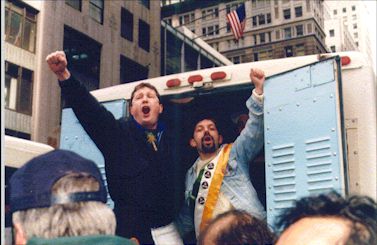 Brendan & Tarlach MacNiallais arrested at the St. Patrick's
Day Parade, 1994
Brendan & Tarlach MacNiallais arrested at the St. Patrick's
Day Parade, 1994
Perry Brass: The Irish and the gay question are very controversial in the United States. Is this less controversial in Ireland? Brendan Fay: The answer to that is really a "Yes" and "No." Basically there is no questioning of Irishness in Ireland, so there are different identity questions. In America to be Irish, I've almost heard it described as being a "hyper-nationalism." The Irish in America have always been very defensive—and with good historical reason. They arrived here fleeing famine, persecution, hardship, to find themselves in a tremendous hostile America. There were Anglo-American people who were openly hostile to these hordes of immigrants, bringing with them their Catholicism and their Irishness. So the Irish over here have a certain "siege mentality," so that Irishness and their Catholicism have gotten very enmeshed. Now the gay issue is different, I think, in Ireland because at a time in the 90s when Ireland was emerging and growing in a different way—we had just elected Mary Robinson as President—there was a women's movement and a growing sense of identity and change. There was a lesbian and gay movement; we were going from strength to strength; yet there were still many challenges. But we should say there are many different Irish Americas. We cannot paint it all with one brush. The Irish America that is visible on Fifth Avenue on St. Patrick's Day is often the only Irish America that people see. But I often remind people that Dorothy Day [founder of the Catholic Worker movement] has a certain Irish background, Paul O'Dwyer [a New York liberal senator] was Irish America. Michael Quill, the labor leader was; so was Mother Jones. Che Guevara had Irish on his mother's side; she was a Murphy, or was it a Lynch? So there are many Irish Americas, and the one that is visible on Fifth Avenue, which is often represented by this Irish Catholicism—conservative, repressive, fear-filled and fearful, always threatened on the outside and by the "other"—that is tragic that it is presented so. From within this community comes its lesbian and gay members. We are not outside the community, but come from within it. Perry Brass: So it seems that Irish Americanism is more conservative than Ireland? Brendan Fay: You're right. That is why there was no problem with lesbian and gay contingents participating in the St. Patrick's Day Parades in Cork; in Dublin they were welcomed as a contingent. In Cork they won "best newcomer prize," and the bishop of Cork sat on the reviewing stand.
Perry Brass: There is a strange thing about the whole "green" thing, because in America wearing a green suit became a gay, covert symbol. So we have this thing about the Irish, the greenness, and the gay symbol. Something I talked about with you earlier was that I believed there was such a thing as a "separate genre" of the Irish closet case. And you said you thought so also. Brendan Fay: Yes. Perry Brass: So, is there some sort of relationship between this covert sexuality and so much of Ireland's history? Brendan Fay: Yes, for a country and people renowned for expression, whether verbal or literary, there is incredible repression going on simultaneously. We are a community riddled with paradoxes. We have Brendan Behan on one hand and Father Conglin [the far Right Wing radio priest from the 30s] on the other. Ireland had one of the most reactionary censorship boards in the entire world. This no longer operates, but many of Ireland's artists and writers had to leave, simply to work. Perry Brass: But it was an oppressed country. Brendan Fay: There are real connections between our homophobia, our self-repression, and our colonial past and history. I believe that the erotophobia inside so many Irish communities is not a native Irish trait. In fact, historically, when you look back at Irish literature written in Gaelic, the native Irish language, some of it is wild and bawdy—even right back to the literature that came from the Celtic monasteries. Perry Brass: So this could have been clamped on by the British colonialists? Brendan Fay: Absolutely! It is part, I would say, of a dual heritage from outside: from London and from Rome. Perry Brass: This would bring us back to our "friend," Roger Casement [the Irish nationalist hanged by the British during World War I as a spy]—who is also a great passion of yours, I guess. Brendan Fay: Oh, yes! Casement is one of the cases in Irish history who has never been fully embraced as the hero, or the wonderful larger-than-life figure that he was. This is simply because of prejudice and his gayness. Perry Brass: He was certainly a second gay martyr. If you want to consider that Oscar Wilde died as an Irish gay figure, then Casement certainly was the second one of this type. Brendan Fay: There is no doubt in my mind that Casement was executed because the British government released sections of his diaries, in order to insure—to guarantee—his hanging. All around the world there was this cry that they could not hang this humanitarian figure, so what was done was the release of sections of his diaries that ensured his quick execution.
Perry Brass: This is what I call in my book, "the gay work." The spiritual work that has an eroto-spiritual side to it, as well as the deepest psychological side. This work is so important to gay men, because without it all we're doing is spinning our wheels back on the gay commercial treadmill—queers as endless consumers, which seems to be the number that is happening now. But with the Irish situation, by cutting the Irish off from their own deeper eroticism, making them so puritan—more puritan even than the colonial English—did they cut themselves off from a deeper Irishness, too?
Brendan Fay: Absolutely. From an essential part of our identity, from that bawdy, wildness. And that is where I say the doing of history is important. And where as lesbian and gay people there is a real challenge to recover and uncover, for future generations and for ourselves, our stories. To become storytellers. To recover the art of telling our own stories, and everyone can begin that today. We can by saying, "I refuse to be silent." We need to tell our stories, both the present ones and the past ones. This is still very difficult in a culture that rewards silence. Where we are welcomed for our money, we are welcomed for certain traits, but people do not want our whole stories. We are still worried about tenure and things like that. But telling these stories invites other people to do likewise. What that has done for me is I would have grown up and never believed there was an Irish gay heritage. Perry Brass: And you believe this now? Brendan Fay: Certainly. It began when I read works like Jonathan Katz [author of "Gay American History"] and was so amazed because this is our community story. This man had pulled this together, dug and dug deeply, and drawn it together. And I want to give Irish people back our own heritage. Because the gay Irish story is an Irish story. It's not from outside being imposed. It's part of our story. Here it's strange because when you go into Irish bars or the Irish community, it was unacceptable to be lesbian or gay, and when you'd go into gay groups, they'd laugh at the notion that you're Irish. So it's very important to do this work; I felt we must do the parade stuff, yes—and at the same time we must begin to tell our stories. Perry Brass: Before, when we were talking, you had told me a story that delighted me. This story of Father Ende, the Trappist monk who'd been an abbot. The story was how you'd had gone down on your knees for confession, and after he had given you absolution, he had said to you, "I have absolved you, and now it's time for you to do the same thing for me." And he went down on his knees for you. Can you tell me the story again. It was such a great story. Brendan Fay: About seven miles from the town where I'm from is Melifant Abbey. It is a Trappist Monastery. I was there for a weekend, and during the break I was walking around the grounds, on the farm, when this older monk came towards me. He stops and we began to chat. Then he said to me, "Have you been to confession, lad?" And I said, no, and he said, "Well, then, we'll do it right here." I was then about twenty-one or twenty-two, and he said, go down on your knees, and of course I did that, and I rattled off my list of sins, which were, of course, all sexual. This reflects my upbringing—I call it, "all sinfulness gets confined to the pelvic arena." And Father Ende then takes me by the hands and lifts me up and he says, "For your penance, I want you to look in the mirror and remind yourself every morning that you are made in the image and likeness of God." Now, it took me a long time to do that; but then he says to me, "Now your soul is clean, and you are a good, holy boy." Then he says to me, "Now I want you to pray over me." This old man gets down on his knees, and he says, "Now put your hands on my head, and please say a prayer for me." And I nervously muttered something, and lifted him up and he gave me a hug, and he told me then how he was the same as I was. He was also attracted to men—he did not say he was gay, but neither did I. Neither of us had those words, or used them. He saw being gay as a cross, a great Cross to bear and to carry. But what was unique in that encounter was the love of this man. The mutuality of it—the real humbleness of it, the earthiness. And also, that this man had loved me in a way that no other man had. This began an extraordinary friendship, that went on for quite a number of years, right up to when I arrived here. There were months when I refused to write back to him, and his letters would arrive. He'd write every two weeks to me, sending me prayers and hugs and kisses. He believed that the solution was that I needed to find the right woman. So I went and found a woman and of course nothing was right. I started dating her, and I'd be sitting on the top of a double decker bus with my arms around Roisin, and the bus conductor would come and give us our tickets while, of course, I'd be falling in love with the bus conductor! So I see this time as a painful search, while I tried to just hold it together—wanting to be accepted by people, longing to fit in and belong. At this point I was incredibly torn between the gay world of Dublin, which I had been recently been discovering, but never quite feeling at home there. This was situated around Stephen's Green, a section filled with bars, with [public] toilets; it is still a very popular gathering and cruising area. This was the early 80s, and the [gay] center in Dublin had opened. It was known as the Herschfield Center, for Magnus Herschfield. I would go there occasionally, but not a lot. Eventually, then, Mike Warren came from St. John's University [in New York] and since at the same time I had become involved with church groups committed to social justice and activism, he invited me to do my graduate work here. I had become involved with issues like nuclear disarmament, and the campaign in solidarity with the people of El Salvador and Nicaragua. There was a great sense of global consciousness, and that has stayed with me. So when people ask me about the roots of my activism, that is where I see it. Perry Brass: So you went to St. John's University in Jamaica, Queens, when Michael Warren asked you to come there and do graduate work? Brendan Fay: Yes, there I was taken aback at the conservative nature of the campus. How could a university have so many young adults and yet be so conservative? Here was I—I had just left St. Patrick's College in Maynooth (Dublin), where most of the trustees were Catholic bishops, and I was used to the students standing up on the tables for all kinds of campaigns. Students taking over administrative offices and making all kinds of demands. Perry Brass: So they had a real tradition of student activism? Brendan Fay: Yes. But of course I was arriving at St. John's during the Reagan years, so I shouldn't have been so surprised. But at St. John's a transformation began due to my reading Carter Heyward [author of "Our Passion for Justice"]. I would say that the fearful, repressed, self-hating homosexual who arrived at Kennedy Airport began a slow, painful, but very liberating transformation during this first time in America. I began finding books by Carter Heyward, Audrey Lorde, and John McNeil. By day I was studying under teachers like Mike Warren and Paul Surlis, teaching social ethics and liberation theology; Mary Buckley, a feminist, was challenging me to rethink the world and the Church—to think more critically. By night, I was discovering the gay world of Queens [New York], at bars like the Magic Touch. Very close to it was an Irish bar called the Liffy, so I was going back and forth between the two bars. The Liffy was named for the main river in Dublin, and there I'd drink pints of Guinness and put on the old ballads and songs on the juke box, and get all sentimental. Then I'd run over to the Magic Touch and order Budweissers and hope that somebody might say hello and pick me up. This was a sad picture in some ways, yet maybe we all have to go through this. And of course I re-invented myself many times. People would say, "What's your name?" and I couldn't say my name was Brendan—that's amazing when I think back. I would say I was Micky, Patrick, or Sean. Perry Brass: So you had a bar name? Brendan Fay: Yes. This was common at the Magic Touch, which really reflected the Jackson Heights [Queens] gay community in its diversity. It was full of immigrants, Latinos, and others. I had some wild, wonderful times there, met some wonderful men; and had some awful times, too—sad, lonely nights, but that is life. Perry Brass: But this started you to start your own gay group?
For many of us, the Oscar Wilde Bookshop was our community center, an incredible place for discussions about women, about being gay men, about the community, about pornography. My consciousness was really heightened, challenged, sharpened by Craig. Jesus Lebron was a young New York Puerto Rican from the South Bronx who worked with Craig. We became friends and lovers, and he became a real mentor to me, because they were both veteran activists, and I learned really to recover a self-esteem that I never thought was possible from people like them. This was, by the way, after graduating from St. John's. There I learned to articulate, write, and speak—but I also learned to be silent. On so many campuses across the nation, it's still taboo to be open. A majority of our community is still silent, and does not feel free. As I often say, in the "land of the free," how quickly unfree I became. I learned as a gay man I could have all the fabulous, wild joys and pleasures of being gay at night—as long as I kept it there. So long as I kept it in the bars, the backrooms, whatever, that was all right. Perry Brass: But nothing that would increase your sense of a richer self, a more integrated self? Brendan Fay: Yes, a more integrated self. A less tortured, divided, defensive, hiding one. I was very involved with the Irish community, and yet was not open about being gay. But slowly, surely, I was beginning to come out to more and more people. That was from true encouragement from the likes of Craig and from putting up the notice to reach other Irish lesbian and gay immigrants. They began to call me and we formed a group called Irish Lesbians and Gay in New York. We began to go to Irish pubs together and wear our pink triangles. This was around 1988. In 1990, ILGO was formed. I saw a notice in a newspaper and joined in May. Very quickly our own small group joined ILGO. I remember our first Gay Pride parade, June, 1990—the screams of sheer delight of people on the sides as we walked down with our "Irish Lesbians and Gays" banner. I organized a few people to dance, so we had a piper—that was incredible! I thought, "My God, we have pushed against silence. We have come out of the ghetto." Over the following months, after that experience, we began to think about marching in the St. Patrick's Day Parade, in our own community. That idea caught on. The St. Patrick's Day Parade is so important in New York. Maybe people who aren't Irish don't appreciate its significance. On one level, there are those miles of bloody bagpipes and greenery and mad top hats. But at another level, it has its roots in a community that has a whole history of fleeing persecution, famine, looking for identity, always being underclass. The Parade does represent a certain rising up against so many obstacles; it represents that the Irish, as a community, have struggled against prejudice from the time when there were "No Irish Need Apply" signs everywhere. The Hibernians who control the Parade, which is the biggest ethnic parade in the world, to me have failed the Irish community. Not only have they done a tremendous injustice to us, as Irish lesbian and gay people, but they've failed the Irish community and even New York, in what I see as their stewardship of a community's expression of itself and its story. Perry Brass: It has done two things to the Parade: one, it has made this issue a prime issue of the Parade; and two, it has made the St. Patrick's Day Parade the only exclusionary parade in New York. I know of no other parade that even if you showed solidarity with the marchers, you'd still be told you could not march. Brendan Fay: Well, the fact is the Israeli Day Parade has excluded the Beth Simchas Torah [New York's gay synagogue] from carrying its banner. So there are other parades that have picked up on the Hibernians exclusionary tactic. However, other parades have welcomed gay and lesbian contingents, such as the Philippines Parade and the Puerto Rican Day Parade. So to me the Parade became the stage on which we acted out the impact and effects of years, if not centuries, of bigotry and prejudice. That Parade in 1991 changed my life. We walked without our banner, but were led by Mayor David Dinkins in an extraordinary gesture of solidarity. The Mayor's traditional spot was the front of the Parade—which is, of course, where Guiliani marches every year—so I will never forget Dinkins's gesture. Subsequently after the Parade, I was fired from my job as a religious teacher at a Catholic girls' high school in Queens. There were arrests. Our group gained much notoriety. And the issue, even nine years later, has not been resolved. In '94, partly out of frustration, a group of us formed the Lavender and Green Alliance. We needed to do something positive and constructive, the Parade was so overwhelmingly negative.
By '91, '92, '93, after getting arresting so much, we began dreading this upcoming "festival." So with the Alliance, we said we'll get together, we'll cook a dinner, we'll bring in Irish traditional musicians and we'll dance. And all around the walls, I will put up images of gay and lesbian Irish men and women from our past and present. So in contrast to the hate and bigotry of Fifth Avenue, at least we'll create this positive space. We did it first in Queens, at a church in Flushing. At our first event 70 people showed up. At year two, we moved into the City, and for the past several years, we did it at Park Avenue Christian Church. I see this as just as significant a gesture of activism as the Parades, as getting arrested. It is bringing people together, eating and dancing together, and sharing poetry and stories, both past and present. Some people say, "Brendan, you're brave, you get arrested." But to me, I see the work of this annual gathering as equally significant. One guy, I remember, brought his parents. They had never met other lesbian and gay people, or their parents. Another man, who lived in isolation with his lover in Jersey, had never been involved with the gay community. His lover had died and this man was suicidal and depressed. He came to our event, too. So this is important work for us. Perry Brass: This is what I call "the gay feast." Brendan Fay: Yes, I like that idea. Perry Brass: With the arrests, did you start to feel that you were only adding more grist to the New York Daily News?
Randy was all excited, I was less so, but I went. I watched the audience scream, "Sally! Sally! Sally!" and Sally came out—cameras on, lights—and the other cases were a woman who was fired because she refused to remove her facial hair and a woman who had b.o.—then there was me, fired because I marched in the St. Patrick's Day Parade. I walked out of that show and just kept thinking, "Today I became a Victim On Parade." I felt like a freak of the late Twentieth Century. I told myself that I had to stop living out of this victim mode. I had to find new ways of being. Perry Brass: You'd become just another part of the TV machine. They love people like that. If you'd been fired because you had one leg, they would not have been as interested. You'd become just something they can use to get to the commercials. Brendan Fay: Yes, we have to watch ourselves to stay away from the "Victim on Parade" mode. That's why this dinner is important. We call it "Oiche Aerach," Gaelic for "Gay Night." So it's important that we recover our own language, that we articulate our lives in our language. Perry Brass: Can you talk about your involvement with the gay immigration situation? Brendan Fay: I was always conscious of being an immigrant, but more so when I was fired. Being fired, losing my visa status, reminded me of how fragile all this is. There were groups fighting Irish discrimination, but no one was fighting for gay immigrants. And simply being lesbian or gay was grounds for exclusion from this country—that only changed in 1990. Very recently. Today being HIV positive—and gay—are grounds for exclusion. If you're heterosexual and in a relationship, you can get a HIV waiver, which is incredible to me! I remember "winning" the green card lottery, and I realized how tenuous my life is around this green card, and how powerless I am on this level. It also reminded me how we cannot take anything for granted. Tomorrow morning a new political leadership could move in to Washington, Albany, or New York, and undermine all our civil rights, unless we are vigilant, active, and present. We do not have the pleasure of being complaisant. Perry Brass: Now you're involved with the struggle for gay couples, where one is a citizen and the other an alien. Brendan Fay: Yes. The Bi-National Same-Sex Couples Campaign. That is through my recent involvement with the Lesbian and Gay Immigration Rights Task Force. This is an important campaign. I am in a relationship of 3 years with my lover and partner, Tom, but according to the laws of the INS, we are complete strangers. We're like roommates. If we were heterosexual, we could marry, I could have a green card, be a citizen, and have those 1,049 benefits that go with the right and freedom to marry. This is another debate—marriage—but I always say that these debates are important. They impact on people's lives, and there are thousands of lesbian and gay immigrants who are suffering, living lives of anguish, because of the current state of the laws. We organized a rally and press conference outside the INS, at 26 Federal Plaza [in downtown Manhattan] last Thursday, just around Valentine's Day, to call attention to the suffering, pain, and injustice of bi-national same-sex couples. We highlighted the fact that 10 other countries have these rights—and just Saturday South Africa became the 11th country to do so, joining New Zealand, Canada, England, Belgium, and Australia among others. It was also very moving to hear people from places like Thailand and Colombia speak—people who rarely get to speak in our community. The voice of the immigrant is rarely heard among us. Perry Brass: This goes back to your thing about breaking silence. Brendan Fay: Yes. and that's what that Thursday rally and press conference did. There we had immigrants themselves breaking our own silences and telling their stories. It was an extraordinary moment. Tremendous love and courage were shown there. This is a whole new stage for us. We're now not just coming out to speak about our lives—which some people now think is no big deal anymore—but we're coming out to speak about our LOVE as gay people. Perry Brass: If the Irish community itself could break its silence about the gay, lesbian, bisexual, and transgendered community, what would you like to hear? Brendan Fay: I'd like to look forward to the day when Irish gay and lesbian people could join our community in the St. Patrick's Day Parade and our own community celebrations. And I'd like to see the Irish government changing its laws as it has in so many other areas. Ireland now has an anti-discrimination bill, protection in the workplace, and refugee status has been extended to gay people from persecution. However, Ireland is not among those 11 countries recognizing bi-national same-sex couples. In New York, I'd like to see the leaders of the Irish community see that injustice towards gay and lesbian people is worthy of inclusion among other issues. This has not happened. And I'd love to see this Parade issue behind us, so that we could go on to other issues, particularly the immigration question which affects so many people. Perry Brass: Tell us about the March 6 event you have planned. Brendan Fay: On Saturday, March 6, Lavender and Green is holding our fifth Oiche Aerach. There will be a dinner and caley dancing, traditional Irish step dancing, with a caley band. And we'll have poetry, stories, and all around the room will be images of Irish lesbian and gay figures. We're expecting 250 people. Tickets are $25.00, but if that's financially difficult for whatever reason, we'll say that is not a problem. It's more important that people come. For more information you can call me at 212 740-9504, or Jim McNulty at (718) 436-5756. I can also be emailed at: tam1@columbia.edu We'll also be honoring people who've been role models to us. We'll honor Marion Irwin, a real activist in our community. She just recently returned to Ireland where she's working with the travelers [Irish gypsies], and we're also honoring Daniel O' Donal, Rosie O' Donal's brother, who is Irish American, has a partner of 17 years, is a lawyer, and has done much public interest work. Daniel is out and open. The whole evening is dedicated to the memory of the Irish-American civil rights leader, Paul O'Dwyer. That will be at 6 p.m. on Saturday, March 6. I am also working on some writing projects: a book on Irish lesbian and gay history, called "Hidden Ireland, A Scrapbook of Irish Lesbian and Gay History," and I'm editing a collection called "At the Crossroads, A Gathering of Stories: Being Irish and Lesbian and Gay in America." The crossroads is where people gather to tell their stories, and this collection will contain the stories of recent immigrants as well as second and third generation Irish people. I also have this traveling road show on Irish gay and lesbian history. So people who have contacts with universities or community centers can contact me about this. It covers everything from the Celtic period to the modern movement. This show makes me realize that in human history, as lesbian and gay people, this is a wonderful time to be alive, because we are breaking out of centuries of silence and just beginning to articulate a whole, wonderful human experience. Perry Brass's newest book, How to Survive Your Own Gay Life, has just gone into its second printing, six weeks after appearing in bookstores. It can be obtained through gay and other bookstores nationally, or through Amazon.com and other online services. He can be reached through his website: www.perrybrass.com. |

© 1997-99 BEI
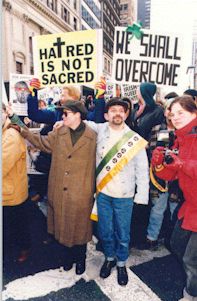
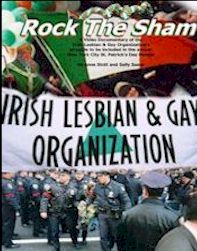 Cover of a documentary, "Rock the Sham," about ILGO's battle to be included in New York City's St. Patrick's Day Parade
Cover of a documentary, "Rock the Sham," about ILGO's battle to be included in New York City's St. Patrick's Day Parade 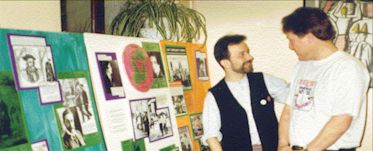 Brendan Fay, curator of this Irish Lesbian and Gay History Exhibit,
greets Danny Dromm, Co-Chair of the Green Lesbian and Gay Pride Committee
Brendan Fay, curator of this Irish Lesbian and Gay History Exhibit,
greets Danny Dromm, Co-Chair of the Green Lesbian and Gay Pride Committee
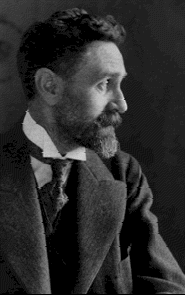 Roger Casement
Roger Casement 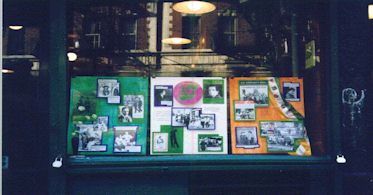 Irish & Gay Exhibit in New York's Greenwich Village, Gay Pride,
1995.
Irish & Gay Exhibit in New York's Greenwich Village, Gay Pride,
1995.
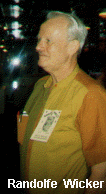 Brendan Fay: Exactly. After I had been arrested so many times, had been
fired from my job, I went through the time when I was known as "the guy
who got arrested, who was fired—it's just terrible what they did to
you!" I was interviewed all over. Then one day, I was at Randy Wicker's
shop in New York [Wicker, a long-time activist, and contributing writer to GayToday has an antiques shop in Greenwich Village], and someone from the Sally Jesse Raphael Show called for me. They wanted to do a show on people who had been discriminated against in the workplace.
Brendan Fay: Exactly. After I had been arrested so many times, had been
fired from my job, I went through the time when I was known as "the guy
who got arrested, who was fired—it's just terrible what they did to
you!" I was interviewed all over. Then one day, I was at Randy Wicker's
shop in New York [Wicker, a long-time activist, and contributing writer to GayToday has an antiques shop in Greenwich Village], and someone from the Sally Jesse Raphael Show called for me. They wanted to do a show on people who had been discriminated against in the workplace.